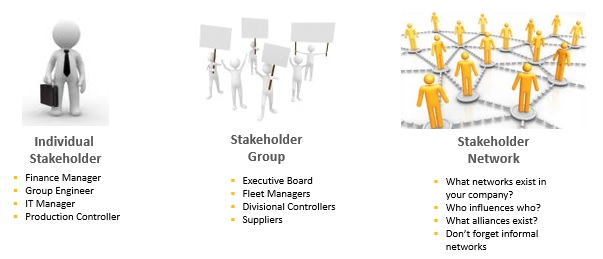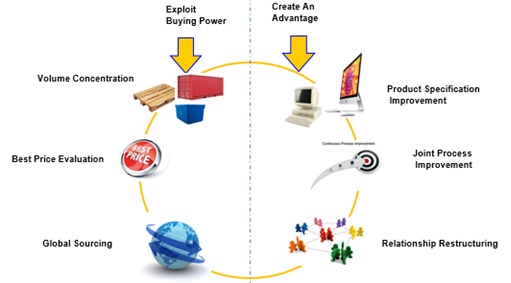The Brave CPO Part 2
The Brave CPO: Dominant Stakeholders
The Brave CPO: Dominant Stakeholders. That procurement must treat its stakeholders as customers in not in question. However, the notion that procurement must ‘Kowtow’ to these stakeholders for mutual benefit is absurd. While procurement must have a strategy to collaborate with stakeholders (touched upon in part 1 ) to build trust, collaborative strategies will be left for future post.
Without a balanced view of ‘all’ of an organizations stakeholders needs and requirements, a ‘dominant’ stakeholder can emerge and inflict significant damage to the organization. The key question therefore is whether procurement leaders are ‘willing’ to meet stakeholders’ requirements at ‘any’ cost?
The overwhelming answer to this question must be: NO!
This is because; there are always other stakeholders to consider, there is often no single right answer as to requirements, nor is there any value in ignoring key considerations impacting costs and profits. Procurement professionals must therefore bring value to the table and consider complex trade-offs in their decision-making process.
Is the internal customer always right?
The point isn’t what the right answer is, rather that there are many stakeholders (internal and external) in even a relatively simple decision whose requirements need to be incorporated into the decision process. If procurement only considers the needs of its direct stakeholders, it runs the risk of missing and/or conflicting with the wider business requirements.
At the low end of the spectrum stakeholders may be ill informed about the requirements of higher level stakeholders, such as shareholders and government. At the other end, executives may not easily realize the impact of their decisions on lower level stakeholders. Missing or failing to consider these requirements can have a significant impact.
Some internal stakeholders requirements may result in a loss of shareholder value and/or do not fit the company’s strategic direction. If management overrides these stakeholders, the loss may be avoided but the stakeholders may begin to distrust management. So it is an important business practice to ensure that such issues are addressed at the front end of the decision making process and not at the end of the process.
Procurement’s ability and willingness to challenge stakeholder requirements and secure buy in at the same time is therefore an important factor in securing value adding business decisions.
In search of value
There is a mutual interdependence between an organization and its internal stakeholders. The stakeholders depend on realization of the organizations goals, and the organization depends on stakeholders support in pursuit of achieving its mission and goals.
Increasing shareholder value is therefore linked to satisfying both internal and external customer requirements:
- If businesses fail to satisfy enough external customers, sales will ultimately decline and if left unchecked, will lead to a decrease in the organizations market value.
- Dissatisfied internal customers and their requirements also need to be addressed. However, whilst satisfying all of their requirements may allow procurement to maximize its customer satisfaction ratings, it is unlikely to be good for its wider stakeholders.
At some point therefore procurement may need to challenge its internal customer’s requirements so that the requirements of other stakeholders are satisfied. For procurement, the objective is to avoid stakeholder domination and to provide sufficient input to ensure that the needs of the wider organization are met. Strategies for dealing with stakeholder interest include:
Accommodation of interests:
- where the stakeholder benefits at procurement’s and/or the organizations expense. Interest accommodation supports long-term expansion of the dominant parties’ gains and power which results in an unbalanced relationship.
Alignment of interests:
- where stakeholders interest are aligned to support the organizations strategic direction and goals.
Balancing of interests:
- which preserves the possibility of competition among interests that must be reconciled without full resources to do so. Some trade off’s must be achieved.
Such strategies offer an alternative to stakeholder domination and procurement compromise.
Compromise cannot be successful in the long-term as stakeholders wait for their chance to excel and dominate resulting in other stakeholders not getting what they want and the resulting conflicts. Procurement must therefore ‘challenge’ to drive alignment of interest between stakeholders who then gain common benefit whilst maintaining their independence.
Raising Procurement’s game
To play in this arena requires that procurement raises its game and develops an understanding of all its stakeholders and their requirements. How many procurement leaders meet with their organizations ‘C’ level executives to understand their priorities, or with their customers and have a detailed understanding of their requirements?
Increased shareholder value is not accomplished simply by meeting stakeholder requirements. Procurement will only be able to contribute effectively to value creation (Fig 1) if it knows and understands both the current and future requirements, of its own organization and its customers, has a good knowledge of what its competitors are doing, and where it can deliver the greatest return given the business’ strategic goals and finite resources.
This requires procurement to be fully engaged with the business at the most strategic level and on a level playing field with other functions such as operations, IT and sales. Individual stakeholders cannot reign supreme at the expense of others. Procurement must develop structures and processes to prioritize stakeholder requirements aligned to the business strategy to determine which requirements will take precedence when conflict arises? This can only be achieved after all requirements are uncovered and evaluated to understand the full implications of any decision.
There are no simple answers. It is complex and takes significant investment in time and effort. Procurement must focus on stakeholder requirements but not to the point where they forget to look at company profitability and value creation. This must be the Brave CPO’s primary goal.
Nuff said …



